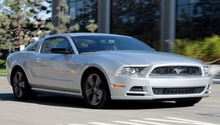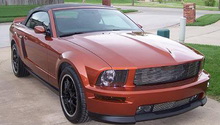Ford Mustang GT 2005-2014: Why is My Car Vibrating?
A vibrating Ford Mustang GT can take the fun out of the drive. Here's why your car is vibrating.
This article applies to the Ford Mustang GT (2005-2014).
A vibrating Ford Mustang GT goes from very fun to a burden. There are many reasons why your car may be vibrating, from a wheel issue to an engine problem. In this guide, we will go over the possible causes of your car's vibration and what the next step for you is. It's important that you don't postpone the diagnosis, because one bad part left too long can start affecting other parts around it. The good news is diagnosing this issue isn't hard at all, it just requires you to follow our lead and check for parts. So if your Mustang is shaking and vibrating, read on to get to the bottom of the issue.

Materials Needed
- Flashlight
- Jack and jack stands
- Tire iron
- Socket set
Step 1 – Check your wheels
You may need to balance them or perform an alignment.
The first thing, and easiest thing, to check are your wheels. Check for uneven tread wear. If your wheels' tread are worn from the inside but not the outside, or if they are worn differently in any way, you may need alignment. There are ways to perform an alignment on your own, but for accurate results, it's recommended you visit a tire shop for this particular procedure.
If your car is vibrating at higher speeds, perhaps between 60 and 70 miles, that's a sign you need wheel balancing. Most tire shops don't charge too much for this process.

If you're balanced and aligned, proceed to Step 2.
Step 2 – Check your brakes
You could have worn pads or rotors.
When your brake pads get too thin, they not only cause your car to vibrate, they also wear out your rotors, which also causes your car to vibrate.
If you're experiencing vibration when you touch the brake pedal, then you're definitely faced with worn pads or rotors. Depending on how long you've waited to replace your pads, it could be both. Raise your car and remove the wheel, pull the caliper out by unbolting the two bolts holding it in place, and inspect the pads. If they're too thin, replace them. Inspect the rotors for any grooves, cracks or rust. If you see any of those, replace them as well.
Another possible cause for vibration, and that could happen without you stepping on the brake pedal, is your caliper's piston sticking, which causes the pads to run on the rotors without you pressing the brake pedal. If you pull the caliper out and the piston is sticking out without being compressed, then replace it with a new one and bleed your brakes.

Figure 2. Thick vs thin pads. 
Figure 3. Warped rotor. 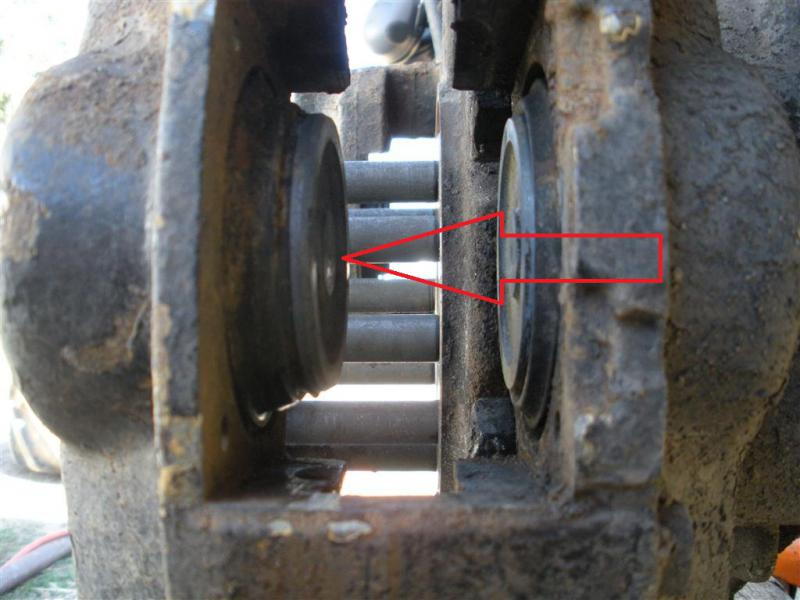
Figure 4. Sticking caliper.
If your brakes are good, move on to Step 3.
Step 3 – Check your suspension
They could be worn or cracked.
Saying check your suspension is like saying check the weather next year; there are too many components to check. To make it simple, check your control arm bushings. The control arm bushings are rubber components, which are made to be installed between metal parts. Over time and depending on the weather, they could get worn, cracked, and sometimes they even fall off. These are usually accompanied by grinding and clunking noise; however, they've been known to cause shaking and vibration. Use your flashlight to shine some light on the bushings and check for their condition.
While you're down there, check your shock absorbers. If they are leaking or broken, they could cause shaking and vibration in the steering wheel. Bad shocks are accompanied by a bouncy ride. So go on any corner of the vehicle and push down on it, a good shock absorber would go down and back to position immediately, while a faulty shock will allow your car to bounce a few times before going back to normal position.
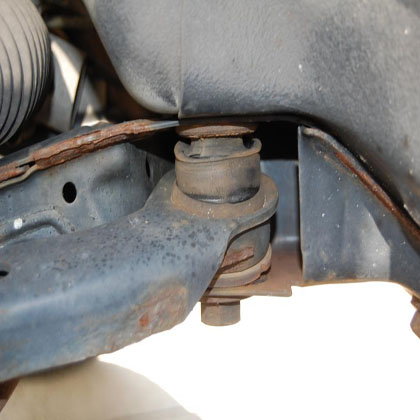
Figure 5. Control arm bushing. 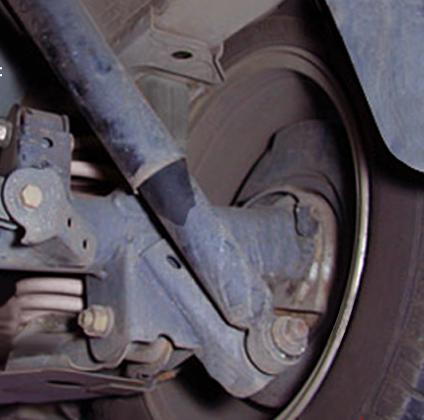
Figure 6. Leaking shock absorber.
Step 4 – Check engine mounts
They could be broken.
The engine mounts are what your engine rests on. Sometimes, with rough driving conditions, they can break, causing some serious vibration and shaking. Loose or broken engine mounts should be fixed as quick as possible, as you don't want to give your engine too much freedom to move or it will end up moving and ruining various components. To check the engine mounts, slide under your car, and locate the mounts where the engine meets the frame of the car. Check the nuts and bolts holding it in place. If they are broken, then you've found your problem.

Related Discussions
- Help with Vibration - MustangForums.com
- Car Shaking - MustangForums.com
- Vibrates when it Starts - MustangForums.com



